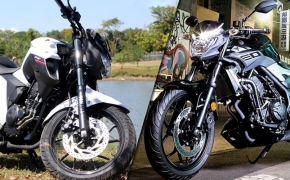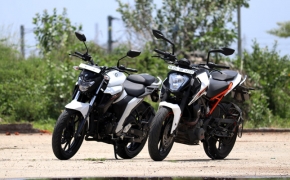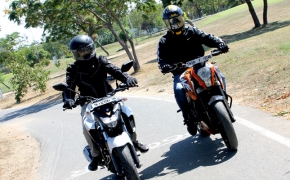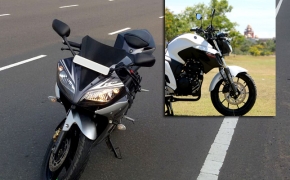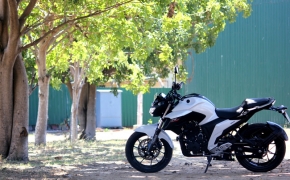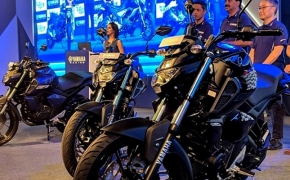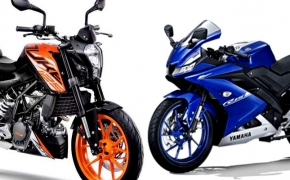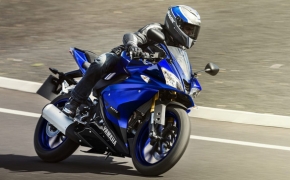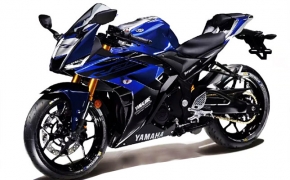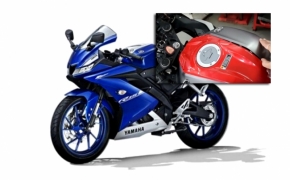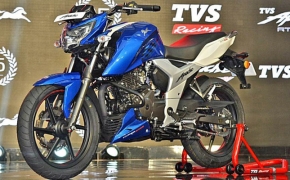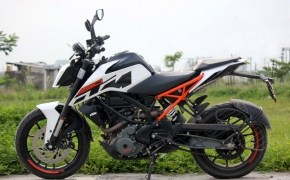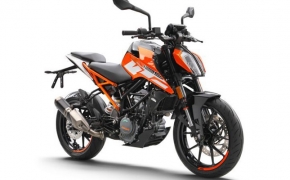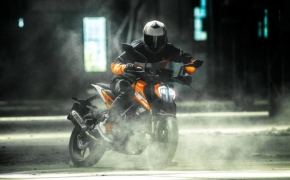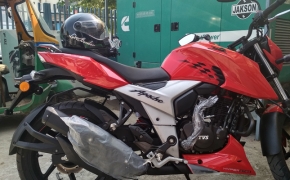The Sub 250cc Naked Bike Shootout
With the recent launch of Yamaha FZ25 and the relaunch of Bajaj Pulsar NS200, the sub 250cc Power commuting and sports touring segment just got more options to choose from. We compare these two with the TVS Apache RTR 200 4V and make an overview of these bikes in terms of performance, equipment and reliability in the following article.
Yamaha FZ25: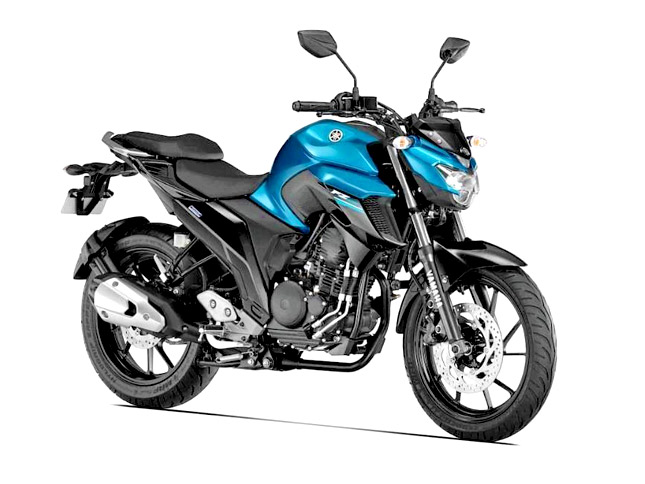 The latest launch by Yamaha India is the new FZ25, a sibling for the critically acclaimed FZ 16. The bike sticks to the same original FZ design, with a few modern additions like LED headlamps and LED tail lamps. The heart of the motorcycle is a newly developed single cylinder 249cc oil cooled engine that produces 20.69 Bhp of power at 8000 rpm along with 20 Nm of peak torque at an early 6000 rpm. The engine is Fuel injected with SOHC and has Yamaha's patented Blue Core technology.
The latest launch by Yamaha India is the new FZ25, a sibling for the critically acclaimed FZ 16. The bike sticks to the same original FZ design, with a few modern additions like LED headlamps and LED tail lamps. The heart of the motorcycle is a newly developed single cylinder 249cc oil cooled engine that produces 20.69 Bhp of power at 8000 rpm along with 20 Nm of peak torque at an early 6000 rpm. The engine is Fuel injected with SOHC and has Yamaha's patented Blue Core technology.
The front end and tank is heavily inspired from the Yamaha MT09. Even though the 155cc FZ is underpowered, it is still one of the best selling street bikes in India. On the same lines, the FZ25 is also underpowered in its segment but we're sure that the bike will do pretty well in the touted segment. Highway riding and touring will be much easier, thanks to the wide spread power band. Things the bike will miss out on the highway is a 6th gear and liquid cooling. ABS also misses out on this bike, and the sad part is that it is not even available as an option.
The instrument cluster is a completely digital unit, just like its junior sibling. We expect the quality of the bike to be top notch, just like any other Yamaha. The bike was launched with an ex showroom price of Rs 1,19,500 which is pretty good for a quarter liter naked bike.
Bajaj Pulsar NS200: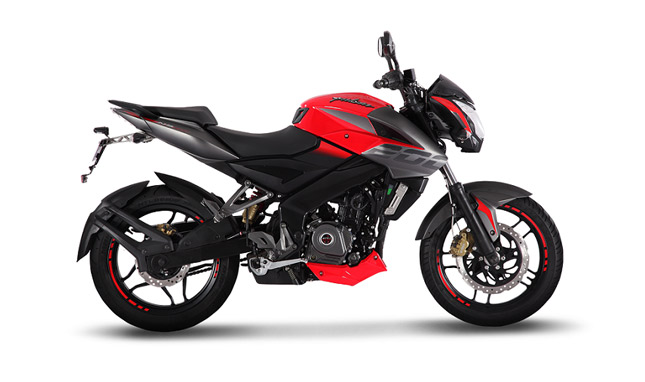 Bajaj has relaunched its highly successful Pulsar NS200, with some new cosmetic upgrades and a BSIV compliant engine. Though the foreign markets get Fuel injection for the NS200, the Indian model is said to have only a carburettor. As there are no major changes in the engine, the power and torque figures remain the same as the discontinued model. The engine will produce 23.17 bhp of power and 18.3 Nm of torque.
Bajaj has relaunched its highly successful Pulsar NS200, with some new cosmetic upgrades and a BSIV compliant engine. Though the foreign markets get Fuel injection for the NS200, the Indian model is said to have only a carburettor. As there are no major changes in the engine, the power and torque figures remain the same as the discontinued model. The engine will produce 23.17 bhp of power and 18.3 Nm of torque.
The Pulsar NS200 is the most powerful bike and probably will have the higher top speed amongst the three. The design of the bike still looks catchy, even after years of launch. The bike retails at an ex showroom price of Rs 96,000 which is a bang for the buck. Having all these said, the only area where the NS200 lacks is the build quality. Though the bike looks premium visually, as years pass by there is a bit of a rattling here and there followed by minor issues on the motorcycle.
TVS Apache RTR 200 4V: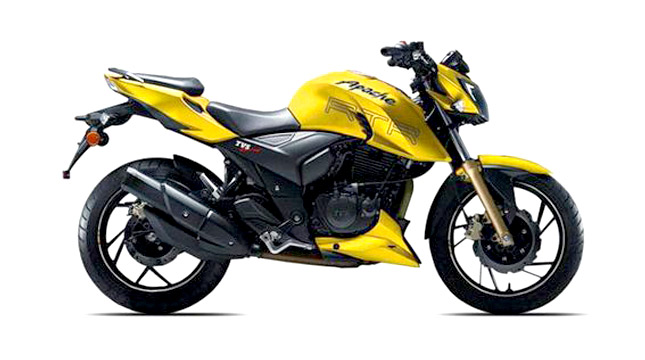 The Apache RTR 200 4V is the Flagship motorcycle of TVS, which was unveiled some time back. The RTR 200 is also the first motorcycle above 180cc launched by TVS. With all the experience and knowledge in Racing, TVS has created a quality motorcycle with a powerful engine and least vibrations. The bike has a peak power of 20.23 bhp and a torque figure of 18.1 Nm. The bike looks macho from the side and rear, thanks to the Draken X 21 concept influence.
The Apache RTR 200 4V is the Flagship motorcycle of TVS, which was unveiled some time back. The RTR 200 is also the first motorcycle above 180cc launched by TVS. With all the experience and knowledge in Racing, TVS has created a quality motorcycle with a powerful engine and least vibrations. The bike has a peak power of 20.23 bhp and a torque figure of 18.1 Nm. The bike looks macho from the side and rear, thanks to the Draken X 21 concept influence.
TVS offers two variants of the Apache 200 4V with one being carburetted and the expensive one being fuel injected. The company also offers optional Dual channel ABS and optional Pirelli tires at an extra charge of Rs. 7,000 and Rs. 10,000 respectively. The Base model retails at Rs. 88,990 and the higher end model with Dual channel ABS, FI and Pirelli tyres comes at a price of Rs. 1,15,000 ex showroom Delhi.
The motorcycle has been tried and tested on the track and as well as Dyno for a much better throttle response and acceleration. TVS has done a great job in eliminating the vibrations that was predominant on the Apache RTR 180. As an overall package, the Apache RTR 200 4V is a pretty good bike for the Indian highways and road conditions.
Verdict:
Design: Yamaha FZ25
Performance: Bajaj Pulsar NS200
Brakes: TVS Apache 200 4V
VFM: Bajaj Pulsar NS200
Overall Winner: Though the Pulsar NS200 has been here for a long time, the Value for money quotient, cheaper maintenance, performance, styling and fuel efficiency make it a hands down winner amongst the three bikes.
By: Aravind Rb
With the recent launch of Yamaha FZ25 and the relaunch of Bajaj Pulsar NS200, the sub 250cc Power commuting and sports touring segment just got more options to choose from. We compare these two with the TVS Apache RTR 200 4V and make an overview of these bikes in terms of performance, equipment and reliability in the following article.
Yamaha FZ25:
 The latest launch by Yamaha India is the new FZ25, a sibling for the critically acclaimed FZ 16. The bike sticks to the same original FZ design, with a few modern additions like LED headlamps and LED tail lamps. The heart of the motorcycle is a newly developed single cylinder 249cc oil cooled engine that produces 20.69 Bhp of power at 8000 rpm along with 20 Nm of peak torque at an early 6000 rpm. The engine is Fuel injected with SOHC and has Yamaha's patented Blue Core technology.
The latest launch by Yamaha India is the new FZ25, a sibling for the critically acclaimed FZ 16. The bike sticks to the same original FZ design, with a few modern additions like LED headlamps and LED tail lamps. The heart of the motorcycle is a newly developed single cylinder 249cc oil cooled engine that produces 20.69 Bhp of power at 8000 rpm along with 20 Nm of peak torque at an early 6000 rpm. The engine is Fuel injected with SOHC and has Yamaha's patented Blue Core technology. The front end and tank is heavily inspired from the Yamaha MT09. Even though the 155cc FZ is underpowered, it is still one of the best selling street bikes in India. On the same lines, the FZ25 is also underpowered in its segment but we're sure that the bike will do pretty well in the touted segment. Highway riding and touring will be much easier, thanks to the wide spread power band. Things the bike will miss out on the highway is a 6th gear and liquid cooling. ABS also misses out on this bike, and the sad part is that it is not even available as an option.
The instrument cluster is a completely digital unit, just like its junior sibling. We expect the quality of the bike to be top notch, just like any other Yamaha. The bike was launched with an ex showroom price of Rs 1,19,500 which is pretty good for a quarter liter naked bike.
Bajaj Pulsar NS200:
 Bajaj has relaunched its highly successful Pulsar NS200, with some new cosmetic upgrades and a BSIV compliant engine. Though the foreign markets get Fuel injection for the NS200, the Indian model is said to have only a carburettor. As there are no major changes in the engine, the power and torque figures remain the same as the discontinued model. The engine will produce 23.17 bhp of power and 18.3 Nm of torque.
Bajaj has relaunched its highly successful Pulsar NS200, with some new cosmetic upgrades and a BSIV compliant engine. Though the foreign markets get Fuel injection for the NS200, the Indian model is said to have only a carburettor. As there are no major changes in the engine, the power and torque figures remain the same as the discontinued model. The engine will produce 23.17 bhp of power and 18.3 Nm of torque.The Pulsar NS200 is the most powerful bike and probably will have the higher top speed amongst the three. The design of the bike still looks catchy, even after years of launch. The bike retails at an ex showroom price of Rs 96,000 which is a bang for the buck. Having all these said, the only area where the NS200 lacks is the build quality. Though the bike looks premium visually, as years pass by there is a bit of a rattling here and there followed by minor issues on the motorcycle.
TVS Apache RTR 200 4V:
 The Apache RTR 200 4V is the Flagship motorcycle of TVS, which was unveiled some time back. The RTR 200 is also the first motorcycle above 180cc launched by TVS. With all the experience and knowledge in Racing, TVS has created a quality motorcycle with a powerful engine and least vibrations. The bike has a peak power of 20.23 bhp and a torque figure of 18.1 Nm. The bike looks macho from the side and rear, thanks to the Draken X 21 concept influence.
The Apache RTR 200 4V is the Flagship motorcycle of TVS, which was unveiled some time back. The RTR 200 is also the first motorcycle above 180cc launched by TVS. With all the experience and knowledge in Racing, TVS has created a quality motorcycle with a powerful engine and least vibrations. The bike has a peak power of 20.23 bhp and a torque figure of 18.1 Nm. The bike looks macho from the side and rear, thanks to the Draken X 21 concept influence. TVS offers two variants of the Apache 200 4V with one being carburetted and the expensive one being fuel injected. The company also offers optional Dual channel ABS and optional Pirelli tires at an extra charge of Rs. 7,000 and Rs. 10,000 respectively. The Base model retails at Rs. 88,990 and the higher end model with Dual channel ABS, FI and Pirelli tyres comes at a price of Rs. 1,15,000 ex showroom Delhi.
The motorcycle has been tried and tested on the track and as well as Dyno for a much better throttle response and acceleration. TVS has done a great job in eliminating the vibrations that was predominant on the Apache RTR 180. As an overall package, the Apache RTR 200 4V is a pretty good bike for the Indian highways and road conditions.
Verdict:
Design: Yamaha FZ25
Performance: Bajaj Pulsar NS200
Brakes: TVS Apache 200 4V
VFM: Bajaj Pulsar NS200
Overall Winner: Though the Pulsar NS200 has been here for a long time, the Value for money quotient, cheaper maintenance, performance, styling and fuel efficiency make it a hands down winner amongst the three bikes.
By: Aravind Rb












